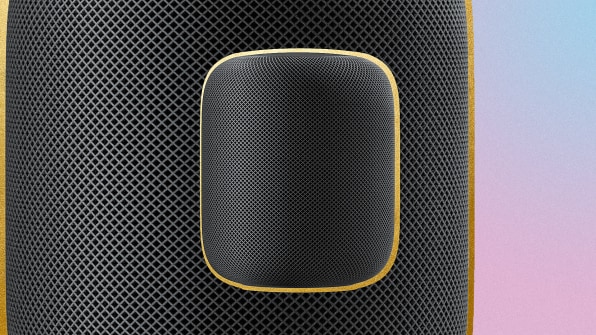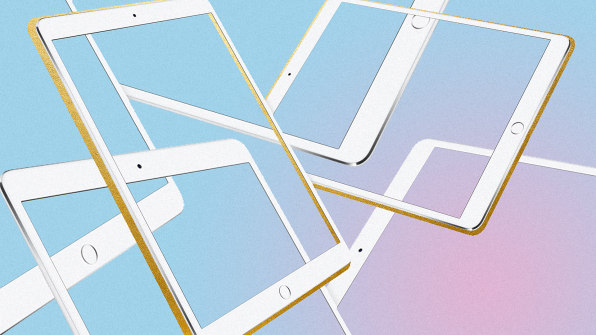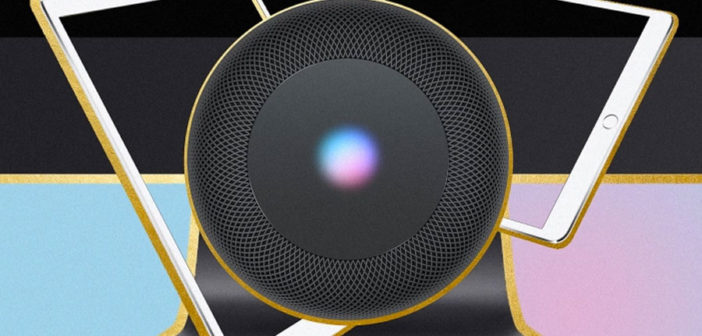Just because it’s worked before doesn’t mean it can work today.
I want to tell you a story about three amazing products.
The world’s most popular smart home speaker.
The world’s most popular laptop computer.
And the world’s most popular smartphone.
Which belong to Apple?
The speaker? That’s the Amazon Echo. The laptop? It’s a Lenovo or HP. And the phone? Currently, it’s Apple’s iPhone. In the past, Samsung’s Galaxy line has challenged that, though. And if you consider all of the Chromebook laptops and Android smartphones in the world made by different manufacturers? Google wins twice, Amazon once, and Apple not at all.
Most investors and fans will assure you that this isn’t a problem. Apple is one of the most profitable companies in history, after all, making $215 billion in revenue last year. And that’s because the company makes money by selling hardware, on average, for about two to three times the price it takes the company to build it.

The $650 iPhone 7 has a build estimate of $220 (not counting research and development)–which is actually high for iPhones, historically. Apple made nearly 70% of its revenue specifically from selling iPhones last year. Add in iPads and Macs, and you’re at 85% of Apple’s revenue. Say what you will about those margins, but consumers have deemed it fair with their wallets, paying a surcharge on industry-leading industrial design, commonly dubbed the Apple Tax.
But what happens when our objects matter less than the software inside of them? When Apple’s best UX breakthroughs like touchscreens have been copied? When Siri can’t keep up with the Google Assistant, iCloud is a middle schooler in the face of Amazon Web Services, and nobody needs iMovie because they just Snap and Instagram anyway?
Apple reveals its ultimate strategy: put fingers in ears. Sell its latest product, the smart home HomePod speaker, for $350–or about the cost of 2.5 Amazon Alexas or Google Homes.
Apple will continue to make money off of its premium hardware, while its competitors continue cutting corners to sell devices at cost, but make up the money with ever-present services in your life rather than gadgets in your home.
Why not? It has worked before. Apple introduced the strategy most successfully with the iPod line in 2001, and perfected it through the release of subsequent editions of iPods, iPhones, and iPads.
Compare that to what Amazon does. While tight-lipped on the matter, Jeff Bezos has said the company makes no money off Kindle hardware sales, and one report says the Echo has actually cost Amazon hundreds of millions of dollars to date. The company’s annual report also reveals that even Prime is something of a loss lead product. But Amazon keeps consumers close, because it believes there’s money in the service end, sooner or later. Now, the company makes billions off of Amazon Web Services. That’s right, all of the server infrastructure it built for its own business of serving people, Amazon now sells to power much of the web.

Google is in a similar spot. The Google Home speaker is not a profitable piece of hardware, but Google CEO Sundar Pichai’s claim to shareholders is that with such devices, “We are very focused on the consumer experience now . . . I think if you go and create these experiences that work at scale for users, the monetization will follow.”Services from Search to Android itself are offered freely to consumers. (Manufacturers don’t pay to run Android on their phones, either.) Google’s revenue primarily comes from serving us ads, for, again, keeping the consumer so close, that it can find money to be made in the digital bits, not the physical blocks.
Amazon won’t reveal how many Alexas it has sold–at least one estimate says about 10 million–but in a sense, it’s an irrelevant stat to the balance sheet. Amazon only needs to worry that, if and when people order toilet paper or Domino’s pizza with their voices, Amazon has a product ready to take the order. Likewise, the Chromebook has started eating into dwindling iPad and Mac sales for all sorts of reasons, but chiefly, that schools can buy students a fully functional laptop for less than the price of an iPad, and Macbooks are all more than $1,000. And Google gets to raise the next generation of internet users on Chrome, Search, Google Docs, and other services core to the intimacy of Google’s ultimate ad play.
Are Kindles or Chromebooks as polished as anything Jony Ive would let off the assembly line? Generally, no. But the best design isn’t always the most polished, with the tightest tolerances and finest materials. Mass-produced goods first and foremost have to be affordable, too.

Back to Apple. To sell an iPhone at cost would literally destroy the business. Only about 10% of the company’s income is off of services, detached from glass and aluminum.Even Apple seems to understand that hardware is ultimately a limited business in 2017. Because the company call its apps, not its phones or tablets, its “fastest growing, highest margin” product. Apps that Apple, for the most part, doesn’t even make. But Apple still gets a hefty 30% cut of app sales and in-app purchases.
In other words, even though it’s a small chunk of Apple’s revenue, the wunderkind of Apple’s business is technically software! Because software you don’t code but can still profit upon are one of the best businesses of all.

So the question becomes: Can Apple keep doubling down on its hardware margins, ignoring the sort of service-level diversification that keeps us using Amazon and Google things all day long, without really giving them another thought? Consider that the middle class is shrinking, and 63% of Americans don’t have $500 in their bank accounts, and the answer is, maybe not. It’s a stark outlook for Apple, that only gets worse if you consider that, if the next billion customers are in Africa and India, hardware needs to be cheaper. Here, Apple is at a disadvantage. Geeky arguments over whether the iPhone 7’s curvy edges are superior to the Pixel’s machined frame are moot when smartphones need to be $500 cheaper to be in your life at all (and not have a screen that costs over $100 to repair).
However, if Apple has any particular hope, it’s this: Amazon and Google are both invasive with consumer data. These companies track our activity largely with the goal of selling us something at just the right moment. Apple is far more transparent. It’s actively pushing machine learning to the device level by developing an on-device machine learning API and working on a specialized machine learning chip to bring advanced AI to your phone, theoretically, without all your data going to a server, where it might be accessible by the government, advertisers, and more. It’s making cross-device encryption a standard, which means a federal agent who seizes your phone at a border crossing–which happened during the Muslim ban–can’t as easily download its contents and read it all. And most of all, that new HomePod speaker, powered by Siri, will anonymize and encrypt everything you say. That means your private questions are not tied to your Apple ID for later reference. Such is not the case for Amazon’s and Google’s assistants.
Apple has and will make trade-offs to protect consumer privacy. (Many of us, at the end of the day, get some value out of a Google knowing our history of things we’ve searched, even if it’s constantly creepy.) It might not work, but at least we’re getting a clear picture of Apple’s big gamble going into the next decade: that people will continue paying more than they should for hardware, with the hope that it’s not just nicely designed, but that it operates with discretion, too.
–
This article first appeared in www.fastcodesign.com
Seeking to build and grow your brand using the force of consumer insight, strategic foresight, creative disruption and technology prowess? Talk to us at +9714 3867728 or mail: info@groupisd.com or visit www.groupisd.com




